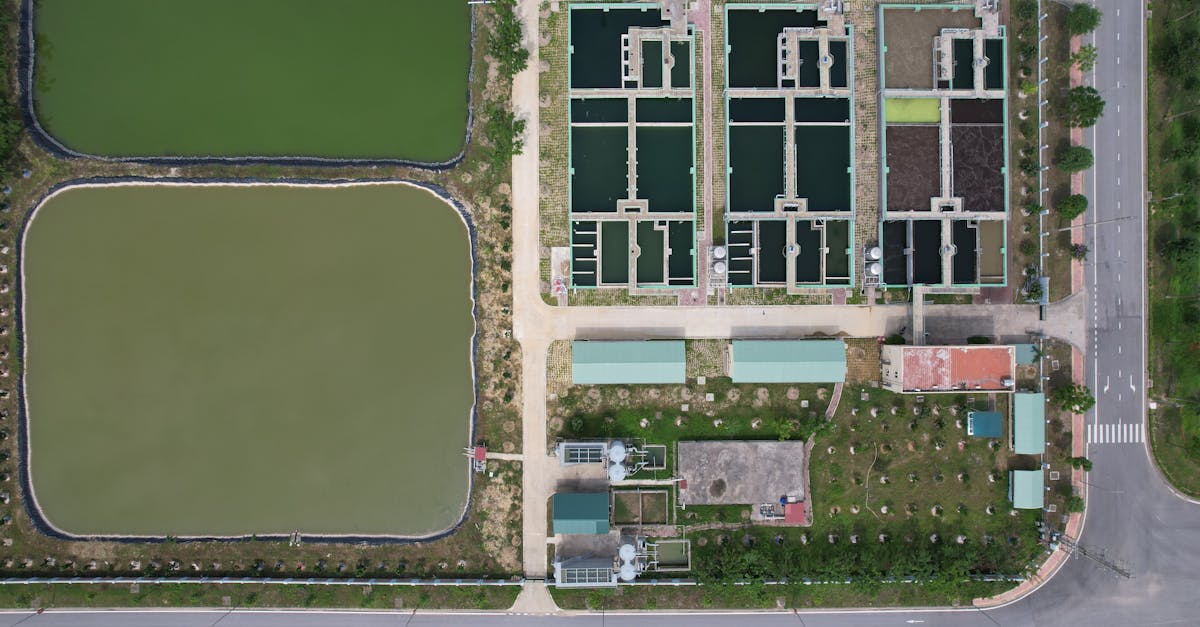Key Takeaways
- BPA's Versatility Across Industries: BPA is widely used in sectors like food packaging, electronics, automotive, healthcare, and construction due to its strength, durability, and adaptability.
- Regulatory Adaptations: Industries have refined BPA applications to meet stringent global regulatory standards while maintaining product performance.
- Health and Safety Compliance: BPA-based materials are crucial for creating safe products such as food containers, medical devices, and durable coatings that comply with industry-specific safety guidelines.
- Challenges of BPA Use: Concerns over health risks, environmental impact, and inconsistent regulations globally pose challenges for industries relying on BPA-based materials.
- Shift Toward Safer Alternatives: Regulatory changes and consumer demand are driving innovation in developing low-BPA or BPA-free alternatives across multiple sectors.
- Future Innovations in Material Science: Research into bio-based polymers and advanced resin formulations aims to replace traditional BPA uses with safer yet equally functional solutions.
BPA, or bisphenol A, has been a cornerstone in manufacturing and industrial processes for decades. It's estimated that over 6 million tons of BPA are produced globally each year, highlighting its widespread use across sectors like food packaging, electronics, and automotive industries. But what truly sets BPA apart is how it's been adapted to meet stringent regulatory requirements while maintaining functionality and efficiency.
From ensuring the safety of food containers to enhancing the durability of medical devices, BPA's versatility has made it indispensable. Regulatory bodies worldwide have imposed strict standards on materials used in critical applications, and BPA-based products have consistently risen to the challenge. By balancing performance with compliance, we've seen how this compound continues to play a pivotal role in various industries while navigating evolving regulations.
Understanding BPA And Its Applications
BPA, or bisphenol A, is a synthetic compound primarily used in producing polycarbonate plastics and epoxy resins. These materials are integral to various industries due to their strength, heat resistance, and versatility. BPA’s chemical properties allow it to adapt to stringent standards across multiple sectors.
In food packaging, BPA-based polycarbonate plastics provide durability and safety for storage containers and bottles. Epoxy resins act as protective linings in metal cans, preventing contamination from corrosion. For example, the resin coatings inside canned goods maintain product quality while meeting health regulations.
In electronics manufacturing, BPA contributes to creating durable circuit boards that withstand high temperatures without degrading. It also enhances electrical insulation properties needed for consumer gadgets like smartphones and laptops.
The automotive industry relies on BPA-derived materials for lightweight yet sturdy components such as headlamp lenses and dashboards. This reduces vehicle weight while maintaining structural integrity—helping manufacturers comply with fuel efficiency standards.
Medical devices benefit significantly from BPA's incorporation into critical tools like syringes, dialysis machines, and blood oxygenators. The material improves transparency and impact resistance while adhering to strict healthcare compliance measures.
Construction applications include paints, adhesives, sealants, and thermal insulation foams made using BPA-based polymers. These products meet building code requirements by enhancing durability under extreme conditions.
Industries rely on BPA because it bridges performance needs with regulatory demands effectively. Its widespread use highlights its importance in delivering safe solutions adaptable across diverse environments.
Regulatory Requirements Across Sectors
BPA's use spans multiple industries, each governed by specific regulatory measures to address health and safety concerns. Here's how regulations shape BPA's applications in critical sectors:
Food And Beverage Industry
The food and beverage industry has historically relied on BPA for its durability in food contact materials. However, increasing scrutiny over potential health risks has led to stricter rules globally.
- European Union: From December 2024, the EU prohibits BPA use in all food contact materials. This includes coatings on metal cans, reusable plastic bottles, and related kitchenware due to its suspected effects on the immune system. Manufacturers must adopt alternatives compliant with these new standards.
- United States: The FDA limits BPA-based material use in items like baby bottles, sippy cups, and infant formula packaging. While it considers current levels of exposure safe for adults, these restrictions reflect growing caution toward vulnerable populations like infants.
Both regions demonstrate a shift toward minimizing BPA exposure while maintaining product safety within strict guidelines.
Healthcare And Medical Devices
In healthcare, BPA is integral to creating medical devices that meet high performance and safety benchmarks. Yet regulatory oversight ensures patient welfare remains a priority.
Medical-grade polycarbonate plastics derived from BPA are used in transparent housings for syringes and blood oxygenators due to their impact resistance. Authorities closely monitor these applications for chemical leaching risks into patients' systems during medical procedures.
For instance, Europe enforces stringent assessments under REACH (Registration, Evaluation, Authorization of Chemicals) regulations before approving BPA-related products for healthcare use. Similarly, the US FDA evaluates device safety against established thresholds for human exposure to prevent adverse outcomes.
Construction And Building Materials
BPA contributes significantly to construction materials like epoxy resins found in paints and adhesives. Compliance with building codes across countries governs its application here.
Epoxy-based coatings using BPA enhance floor durability in commercial spaces or industrial facilities exposed to heavy wear conditions. National standards often dictate permissible chemical compositions within such products to protect air quality during installation processes.
For example, California restricts volatile organic compounds (VOCs), including those potentially stemming from certain resin formulations containing residual amounts of unreacted BPA derivatives. These policies promote safer environments without compromising material performance vital for infrastructure projects worldwide.
Role Of BPA In Meeting Safety Standards
BPA has played a critical role in manufacturing materials that comply with safety and regulatory standards. Its integration into products like polycarbonate plastics and epoxy resins highlights its adaptability across multiple industries.
Innovations In BPA Usage
Manufacturers have continually refined BPA applications to meet strict regulations while maintaining product performance. For example, food packaging now utilizes advanced BPA-free coatings or low-BPA alternatives to align with health guidelines. These innovations prevent contamination while preserving the durability of storage containers.
In construction, epoxy resins containing controlled levels of BPA enhance structural strength in adhesives and protective paints. These advancements support compliance with building codes emphasizing environmental safety. Meanwhile, electronics benefit from improved insulation properties in circuit boards made possible by regulated BPA formulations. This ensures gadgets are both functional and safe for consumers.
Medical devices also showcase innovation through transparent, impact-resistant materials containing minimal BPA content. These developments safeguard patient health without compromising equipment quality or functionality during usage.
Case Studies Of Regulatory Compliance
The European Union's updated regulations exemplify how industries adapt their use of BPA to meet legal requirements. The 2023 reduction of the tolerable daily intake (TDI) by EFSA required manufacturers to reformulate products swiftly without sacrificing efficiency or safety.
Another instance is the upcoming ban on most food contact materials containing BPA under Commission Regulation (EU) 2024/3190 starting January 2025. Industries responded by developing filtration membranes and liquid epoxy resins with undetectable migration levels, ensuring compliance for specialized applications like water treatment systems.
These examples reflect how sectors leverage precise material adjustments to adhere to evolving safety standards while sustaining product reliability across diverse applications.
Challenges And Controversies Surrounding BPA
BPA's widespread use has sparked significant debates over its safety and environmental impact. Concerns primarily revolve around potential health risks, particularly its ability to mimic estrogen, a hormone critical to human biology. Studies have linked high exposure levels to reproductive issues, developmental problems in children, and increased cancer risk. These findings have fueled public fears and regulatory actions worldwide.
Regulatory inconsistencies across regions create challenges for businesses relying on BPA-based materials. For example, while the EU bans BPA in food contact materials starting December 2024 under strict conditions like undetectable migration into food, other regions maintain more lenient policies. Businesses must adapt to varying standards when operating globally or exporting products.
Environmental concerns further complicate BPA's use. Since it's non-biodegradable, improper disposal can result in long-lasting contamination of water sources and ecosystems. Advocacy groups often highlight these issues to demand stronger restrictions or complete phase-outs of BPA-containing products.
The search for safer alternatives adds another layer of difficulty for industries dependent on BPA's properties. Replacing it in applications such as durable plastics or protective coatings requires significant investment in research and development without compromising product performance or safety compliance.
Public perception also plays a crucial role in shaping the future of BPA usage. Negative media coverage often amplifies fears, pressuring companies to shift towards "BPA-free" labels even if alternatives aren't necessarily safer or more effective.
Industries face criticism despite efforts to comply with regulations by using low-BPA options or advanced filtration methods during production processes. Activists argue that partial measures don't eliminate risks entirely but instead delay addressing fundamental concerns about chemical safety.
Future Perspectives On BPA Usage
Regulations are driving industries to rethink BPA's role in manufacturing. The European Union's upcoming ban on BPA in food contact materials, effective January 2025, is a significant milestone. This shift is prompting manufacturers to explore safer alternatives and innovative technologies that comply with stringent standards while maintaining product functionality.
In consumer products, demand for BPA-free items continues rising due to health concerns and regulatory pressures. Baby bottles and sippy cups have already transitioned away from BPA in several U.S. states like Minnesota and Connecticut. Expanding these efforts across broader categories could reshape production practices globally.
Emerging innovations may redefine how we approach material safety. Researchers are exploring bio-based polymers as potential substitutes for traditional plastics containing BPA. These materials aim to replicate the durability of polycarbonates without harmful side effects. Although still under development, such breakthroughs could lead to widespread adoption once proven cost-effective and scalable.
Industries relying on epoxy resins face challenges adapting to stricter limits on chemical usage. Alternatives with lower toxicity levels are being tested for applications like coatings, adhesives, and insulation. For instance, some companies are developing advanced resin formulations that minimize exposure risks while delivering comparable performance in construction or automotive sectors.
Medical devices represent another area where advancements hold promise. Some manufacturers now produce equipment using minimal or no BPA content without compromising transparency or impact resistance—qualities critical for healthcare tools' effectiveness.
Conclusion
BPA has played a pivotal role in helping industries meet stringent regulatory standards while delivering durable, reliable, and high-performing materials. From food packaging to medical devices and automotive components, its versatility has been instrumental in shaping modern manufacturing processes.
As regulations evolve and concerns about BPA's safety grow, industries are innovating to adapt. The push for safer alternatives and BPA-free solutions reflects a collective commitment to compliance, sustainability, and consumer well-being.
Frequently Asked Questions
What is BPA, and why is it important in manufacturing?
BPA (bisphenol A) is a synthetic compound used to produce polycarbonate plastics and epoxy resins. It plays a vital role in industries like food packaging, electronics, automotive, and construction due to its strength, heat resistance, and versatility.
How does BPA benefit the food packaging industry?
BPA-based materials are used for durable storage containers and protective linings in metal cans. These ensure product quality, safety during storage, and compliance with health regulations.
Why is BPA significant in electronics?
BPA enhances insulation properties and durability of circuit boards in consumer gadgets. Its use ensures high-quality performance while meeting regulatory standards.
How does the automotive industry use BPA?
The automotive sector utilizes BPA-derived materials to create lightweight components that improve fuel efficiency while maintaining structural strength.
Are there health risks associated with BPA exposure?
Yes. Studies suggest that BPA can mimic estrogen, potentially causing reproductive issues or increasing cancer risk. This has led to stricter regulations on its usage globally.
Why is there controversy surrounding BPA despite its benefits?
Concerns arise from its potential health risks, environmental impact as a non-biodegradable material, and inconsistencies in global regulatory standards. Public perception often pressures companies to adopt "BPA-free" alternatives.
What are industries doing to adapt to stricter regulations on BPA?
Industries are innovating by developing low-BPA or BPA-free alternatives such as advanced coatings and bio-based polymers while ensuring compliance with evolving regulatory standards.
Is the EU banning BPA entirely?
The EU will ban the use of BPA in food contact materials starting January 2025 due to health concerns. This regulation pushes manufacturers toward safer alternatives.
Are there safer substitutes for traditional BPA-containing products?
Emerging technologies focus on bio-based polymers or low-toxicity epoxy resins as potential substitutes offering similar durability without harmful side effects.
How are medical devices adapting to reduce BPA content?
Medical device manufacturers are producing equipment with minimal or no BPA content through innovative designs that maintain safety and effectiveness without chemical risks.






